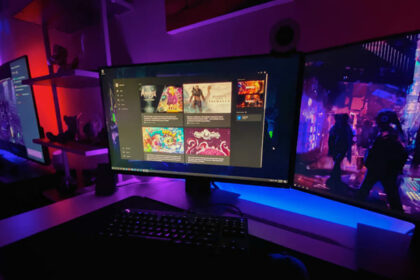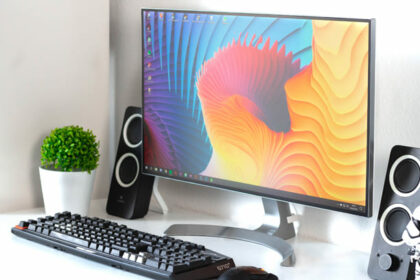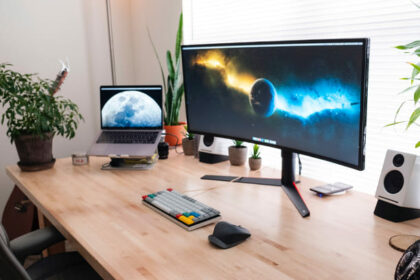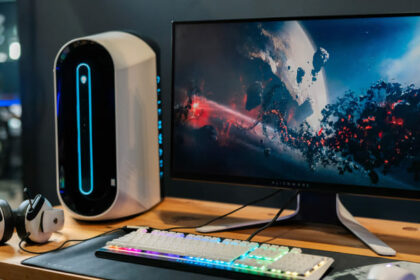Are you struggling to figure out why your 144Hz monitor is running at 60Hz?
In this guide, I will cover the most common problems and the fixes so that you can get your 144Hz monitor running at, well, 144Hz.
Below, I’ll talk about how to identify and fix each of the 5 most likely causes.
Whether you’re PC gaming or if you’re on console, everything should be covered below.
Your Monitor is Set at 60Hz by Default
One common issue is that your monitor could be set by default at 60 Hz.
To change that, go to Settings > System > Display > Advanced Display Settings. Under the Advanced Display Settings, you can see the refresh rate on the lower-left portion of the window.
Click the tab, and you will be able to change the refresh rate your monitor supports.
There, you can select the different types of refresh rates that your monitor supports. If you have plugged in your HDMI 2.0 cable in the correct ports, you should be able to see 144 Hz if your monitor supports 144 Hz.
You Are Using an Unsuitable HDMI or Display Port
If you aren’t so tech-savvy, it is quite common to buy a cable and hope for the best. When it comes to technology, though, what cables and ports you plug it into matters a lot.
Using the wrong cable can mean that your 144Hz monitor is only showing 60Hz, as the cable limits the monitor’s ability to run in more than 60Hz.
Don’t use any old cables, and use the cables that are usually included when you buy your monitor.
For those who bought those expensive monitors, the display ports might be your problem. If you have a 4K resolution monitor, you will most likely not be able to play games on 144Hz.
HDMI ports support the following:
HDMI 1.4: Supports up to 4K (4,096 by 2,160) at 24Hz, 4K (3,840 by 2,160) at 30Hz, or 1080p at 120Hz.
HDMI 2.0: Supports up to 4K at 60Hz, and later versions (HDMI 2.0a and 2.0b) include support for HDR.
HDMI 2.1: Supports up to 10K resolution at 120Hz
With these high-resolution monitors, people usually reduce the resolution to 1080p before playing and revert it back when they start watching, working, or doing something else.
You just have to make sure you are plugging the cable into the right port. If you don’t have the right HDMI port available on your PC, you might have just upgraded your gaming monitor too much that your PC can’t even handle or support it.
Any port above should be fine as long as you aren’t running on a 4K resolution.
Also Read (opens in new tab):
Outdated Graphics Drivers
This is very unlikely; however, an outdated GPU drive can, for whatever reason, affect the Hz that your monitor is running at. This probably only applies if you haven’t used your computer in quite some time, or haven’t bothered to update anything on it in some years.
Make sure that you update all your GPU drivers with the relevant GPU software.
If you use an AMD GPU, use the AMD software, and so forth.
Check That the Monitor Actually Supports 144 Hz
Just because your monitor costs a few hundred dollars, don’t let the price tag fool you, as you may very well have a 60 Hz monitor. You can simply Google your monitor’s model and find out its specs on the internet on websites such as the manufacturer or Amazon.
Another way to check is to actually have a look at the settings.
For Windows 10, go over to Settings > System > Display > Advanced Display Settings and then pick your monitor’s refresh rate from the drop-down menu.
What you see on that list is what you can get with your monitor.
Also Read: How Many FPS Can a 60 Hz Monitor Display?
Check That Your Console Supports 144Hz
If your monitor is 144Hz but it only 60Hz shows, then another common issue is that despite your monitor supporting 144Hz, your console might not.
For example, all models of the PS4 (including PS4 Pro) only have a maximum refresh rate of 60Hz. This is the same for the Xbox One and all of its models.
The PS5 and Xbox Series X/S can output at 120Hz.
So, in all likelihood, your console does not actually support 144Hz unless you’re gaming on a PC, but your 144Hz monitor can still output at the 120 frames-per-second that next-gen consoles can provide.








